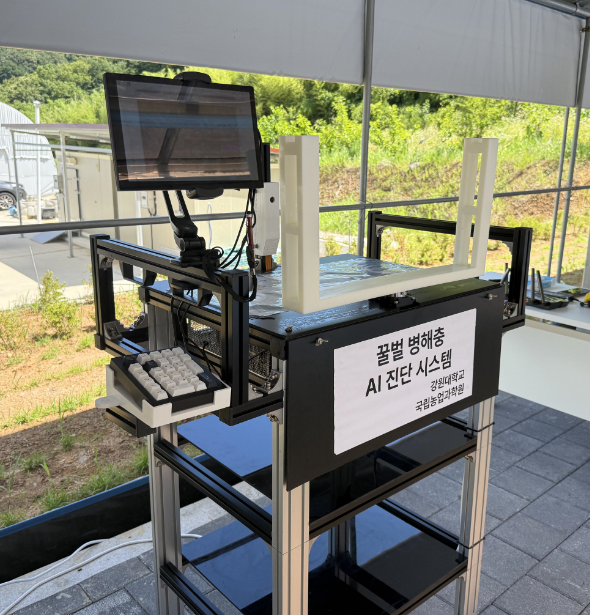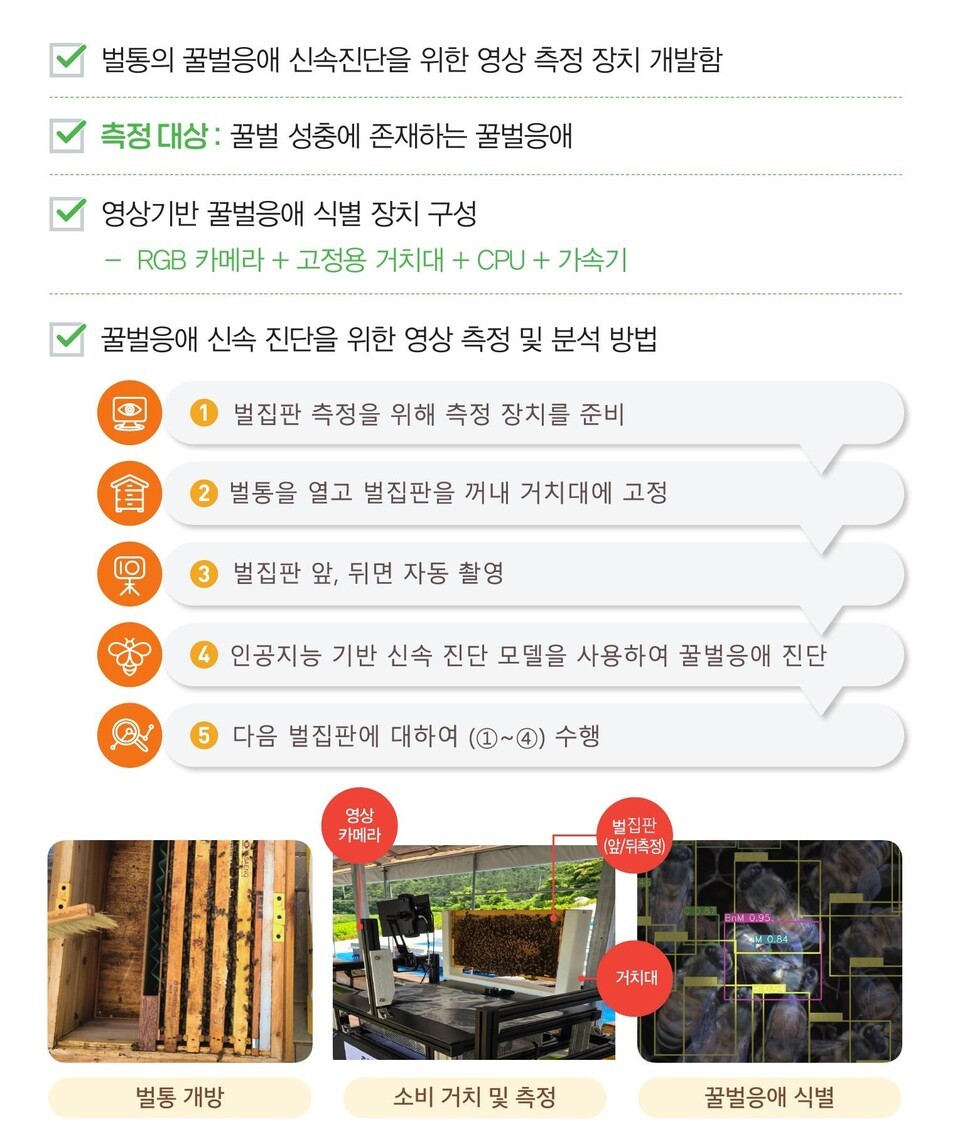The Rural Development Administration (Director Lee Seung-don) announced on the 21st that it has developed the world’s first AI-based “Bee Varroa Mite Real-time Detection Device (BeeSion)” in collaboration with Kangwon National University (Professor Mo Chang-yeon’s research team). This device can quickly and accurately diagnose bee varroa mites, which are identified as the main cause of bee colony collapses.
Bee varroa mites are pests that parasitize bees inside hives, hindering their development or transmitting viruses, subsequently causing mass colony deaths. These mites are known to cause severe damage to bees globally, with significant losses reported in countries like the U.S., where 62% of bee colonies reportedly collapsed last year.

The Ministry of Agriculture, Food and Rural Affairs designated this summer season (July 21 – August 31) as a focused combat period against bee varroa mites, prompting nationwide beekeeping farms to take action. However, the mites live inside the hives, making them hard to spot by the naked eye, and it is easy to miss the control window in hot and humid environments. Even experienced beekeepers have highlighted the high labor intensity and inefficiency, as checking a single hive can take more than 30 minutes.
The newly developed AI detection device “BeeSion” captures images of the hive frames and can automatically detect the presence of bee varroa mites within 30 seconds. Besides detecting varroa mites, the device analyzes a total of 16 types of pests, diseases, and growth information including chalkbrood disease, deformity of wings, and larval abnormalities. It provides scientific criteria according to infection levels, suggesting “control recommendation,” “caution stage,” and “intensive control.” The analysis boasts an accuracy of up to 97.8%.

Designed to be simple and intuitive, the device is easy to use for elderly and novice beekeepers, and it helps in the early detection of bee abnormalities, thus reducing mortality rates. Pilot application results show that it is expected to increase annual profits by approximately 8.6 million KRW in an apiary with 150 hives, while also alleviating labor shortages and the misuse of pesticides.
A farmer who participated in the field demonstration commented, “The fast and accurate mite detection provides substantial help,” and requested for expedited distribution. Kim Hyun-chul, chairman of the Korea Artificial Intelligence Association, praised the device stating, “This device utilizing video recognition technology is a revolutionary step in diagnosing bee varroa mites and will significantly reduce anxiety among beekeepers, contributing largely to damage prevention.”
The Rural Development Administration has completed the patent application for this device and plans to transfer the technology to industry for product manufacturing within this year. They plan to conduct further on-site verification before the full nationwide dissemination to bee farms by 2028.
Bang Hye-seon, head of the Agricultural Biology Department of the Rural Development Administration, said, “This achievement marks the first instance of integrating data and AI technology into beekeeping traditionally reliant on experience. It will be a turning point towards precise feeding management and pest and disease surveillance automation. We aim to enhance the sustainability and competitiveness of the beekeeping industry in line with government AI-based smart agriculture development policies.”
